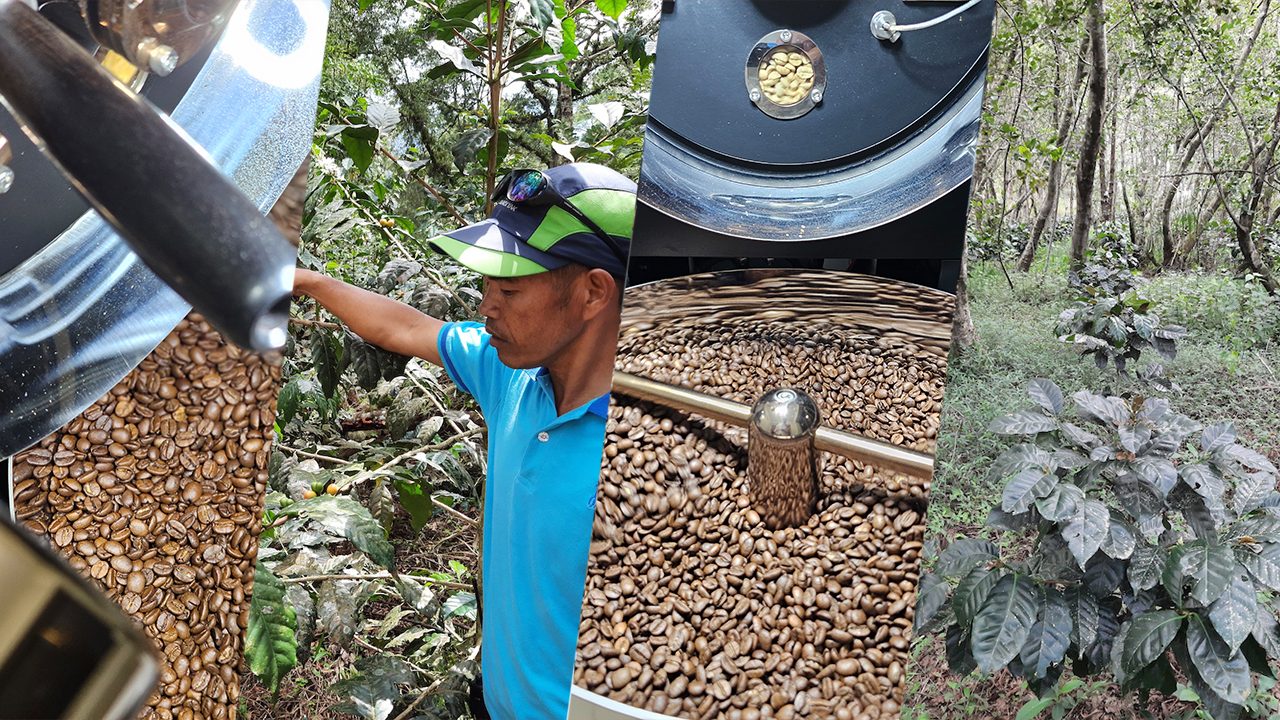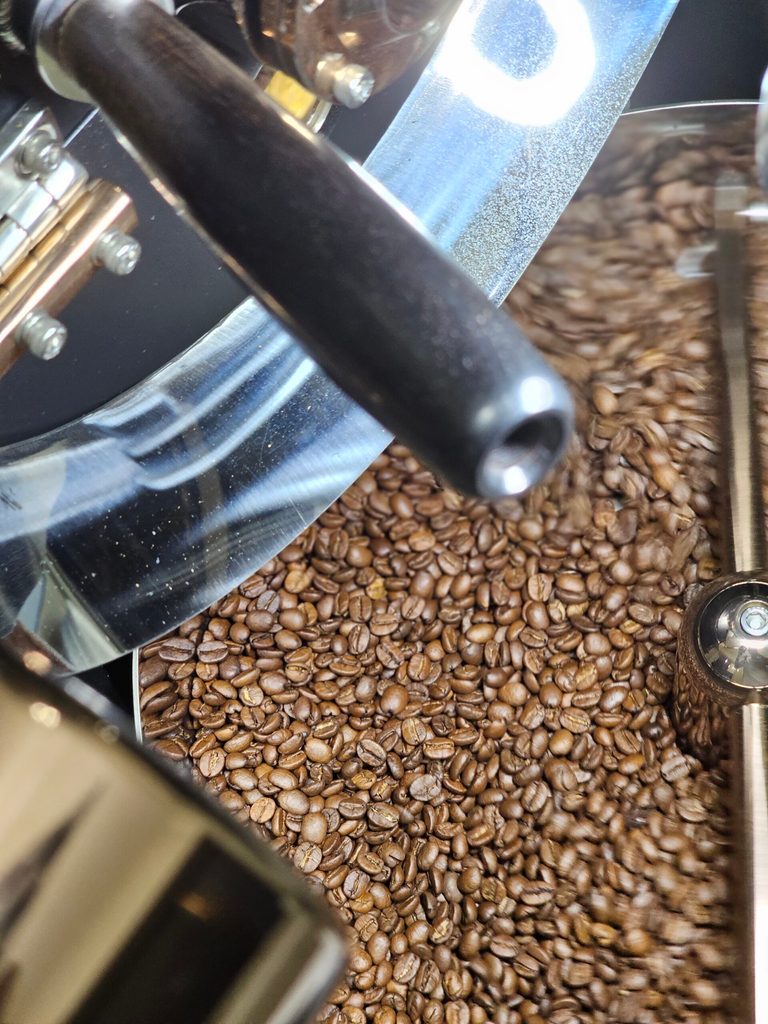SUMMARY
This is AI generated summarization, which may have errors. For context, always refer to the full article.

MANILA, Philippines – For Renjie Lucas, hiking the steep, beaten paths of the highlands in Mindanao has become a routine. His six years working in the production chain of the coffee industry has already seasoned him in such expeditions, which would’ve left many clutching their knees and gasping for air as soon as the hike began. For agriculturists like him, overcoming arduous trips in these rugged trails brings fulfillment, because waiting for him above the mountains of Mindanao are coffee farms growing large swathes of arabica trees producing some of the finest and most delicious coffee in the country.
Renjie’s career involves him working with specialists and helping local farmers cultivate and grow high-quality coffee. As the Senior Field Technician and Nursery Coordinator of the ACDI/VOCA-PhilCafe project, a non-government organization funded by the United States Department of Agriculture (USDA), he believes that the Philippines is capable of uplifting its farmers and producing delicious coffee that can compete on an international stage.
“Our goal is to empower people to succeed in the coffee industry. We aim to train 13,000 coffee farmers so they can also help their farming families. We are also looking to triple the productivity of local coffee farms and export more coffee than what is currently being imported,” said Renjie.

However, the idea of coffee having diverse flavors might be an alien concept to the general consumer. After all, a cup of joe is famous for its bitterness and is generally enjoyed alongside the use of sweeteners such as sugar. The best-sellers in cafes are often the ones prepared with milk, such as lattes and cappuccinos. Very rarely do people enjoy the drink by itself outside of getting acclimated to its strong flavor through acquired taste.
This begs the question: is coffee capable of having intrinsic flavors that can be described as delicious?
Believe it or not, coffee can possess very pleasant flavors. This is especially true with Coffea Arabica or Arabica coffees, as they have the highest sucrose content out of all coffee species. Aside from sweetness, Arabica can also exhibit unconventional flavors associated with other food such as fruits, chocolate, and wine. All these profiles are brought out from the coffee through good cultivation practices.

Cultivation of coffee
To grow flavorful Arabica coffee, rigorous processes should be followed throughout the coffee production. This starts as early as the acquisition of coffee seedlings for germination. These are acquired from the offsets of high-quality coffee trees or “mother plants” so that they would grow to be of the same quality. According to Renjie, a criterion is followed when finding possible sources of mother plants.
“We obtain seedlings from mother plants that are at least four years old. They should be planted in established coffee farms that are either certified by the Bureau of Plant Industry or are regarded for producing specialty-grade coffee.”
The growing condition of coffee also influences flavor. In addition to the need for fertilization and pest prevention, the trees should also receive at least 70% sunlight without being exposed to excessive heat. To work around this problem, many farmers in Mindanao grow coffee under the shade of taller trees to keep them cool.

The presence of shade trees in the coffee plantation also promotes biodiversity and carbon sequestration. They also help control pests and diseases and help farmers save money for fertilizers. According to Renjie, shade-grown coffee is flavorful as it receives more nutrition compared to coffee grown through mono-cropping and other non-shaded methods.
“Coffee ripens better under tree shades. When exposed to excessive sunlight, their cherries will mature earlier, leading to the underdevelopment of organic compounds and proteins that would otherwise improve their flavor.”
Depending on the farmers or the geographical location where coffee is grown, different shade trees can be used. While some prefer river tamarind trees or ipil-ipil (Leucaena leucocephala), others might use falcata (Falcataria falcata), eucalyptus (Eucalyptus deglupta), or fruit trees as shade.
Arabica varietals
There are two popular Arabica varieties grown in the Philippines, each having distinct characteristics and flavors. Catimor is a cross-breed between Arabica and Robusta (Coffea Caniphora), a coffee species known not only for having strong resistance to diseases but also for its bold and bitter flavor. Catimor can also grow in areas that are at least 800 meters above sea level. On the other hand, Typica is a variety that only grows under 1,600 meters above sea level. As the “mother of coffee,” it is believed to be one of the oldest Arabica species. It is superior to Catimor in terms of flavor, albeit being more susceptible to diseases while producing less yield per harvest.
According to Renjie, Catimor is more popular in Mindanao. Aside from being able to thrive under relatively low elevations, it also boasts of “high production and resilience against pests and diseases, especially leaf rust.” Because of the high elevation of mountains in Northern Luzon, Typica is more popular among the coffee producers in the Mountain Province.
The difference between the growing methods and the type of Arabica varieties planted in Luzon and Mindanao are what helps create the diverse flavor profiles of coffee throughout the country. This becomes more evident as the coffee moves further along the value chain, from the production stage all the way to the post-harvest stage.
The flavors of Filipino coffee

For Neil Barria, a coffee roaster based in Quezon City, Metro Manila, there is a “big difference” between coffee grown in the two areas in terms of flavor.
“Mindanao coffee tastes less acidic in a way. Specialty coffee from Mindanao tastes more chocolatey. On the other hand, specialty coffee from the Mountain Province is tangier, which is akin to tamarind or lemongrass, and the like,” he added.
Since 2017, Neil Barria has been exploring the world of coffee. Around this time, he was introduced to the third-wave coffee scene, a movement where consumers are conscious of the art of brewing coffee and how each actor in the coffee industry affects its overall quality. This led him to start a coffee business four years later, a decision which he said is borne out of a passion for the beverage.
Despite the supposed disparity in quality between Catimor and Typica, many coffee enthusiasts such as Neil might still prefer coffee from Mindanao over Northern Luzon due to personal preferences in flavor. Like Renjie, he also believes that our product can compete on an international stage.
“I prefer coffee from Mindanao,” Neil said. “Currently, I’ve been enjoying coffee produced by Sergio-Loon, a farm in Bansalan, Davao Del Sur, because they taste similar to tropical fruits. I also liked Kalasan No Mori, a coffee produced by a farm in Bukidnon. It has a similar profile to Ethiopian coffee. It is very floral, sweet, and mellow; you’d think it’s an international coffee,” he added.

The Philippine Coffee Quality Competition, an annual competition organized by the Department of Agriculture (DA), the Department of Trade and Industry (DTI), ACDI/VOCA, and the Barista and Coffee Academy of Asia (BCAA) – with the Philippine Coffee Guild as its auction organizer – proves that there is an international demand for local coffee. Last year, a local farm from Bansalan was able to sell their green coffee beans for $75 per kilo. Their coffee cost more than six times the retail price in the country, making their harvest the highest-bidded Arabica coffee during the event.
While the Philippines has been producing delicious coffee, Neil believes that convincing general consumers to experience it for themselves still remains a challenge.
“Many people associate specialty coffee with being expensive and sophisticated. So in terms of getting more people to try good coffee that the Philippines has to offer, I think we still have a lot of potential to expand the third wave community.” – Rappler.com
1 comment
How does this make you feel?






Was recently in Cagayan de Oro City and stayed at a pension house, which is the Philippine version of the North America motel. No coffee joint at the pension house but surprisingly it sold ground arabica. Provenance was probably somewhere in the highlands of Bukidnon which is known for growing coffee.
Took it straight after French pressing for 7 minutes. And WOW! My socks were blown off! None of the acidic aftertaste that I loathe. Bold without being overly bitter. Yes, it has a chocolatey flavour as mentioned in the article. Aroma was subdued but sufficient to wake me up. If Maxwell coffee is good to the last drop, that arabica is gentle to the last drop. I would definitely recommend it to those just beginning their journey in enjoying coffee without sugar and cream.